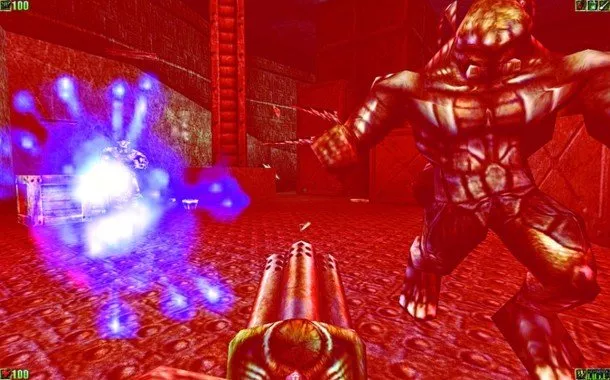Reinstall: Unreal - we go native in Epic Games' forgotten masterpiece
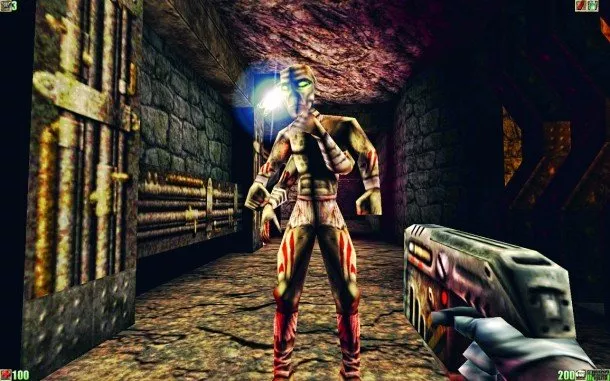
Epic Games, now purveyors of grunting masculinity, offal and chainsaws, once had a line of family-friendly shareware platformers and pinball titles. The reason we no longer think of them as the guys who made Jazz Jackrabbit is solely due to Unreal.
It's an overlooked great. A journey through an alien landscape with a sense of wonder, grandeur and mystery that almost no shooter has since achieved. BioShock, surprisingly, is its most comparable successor. Both games maroon the player in a lurid and unfamiliar world – which, through pursuing their own selfish aims, they unwittingly save. In Unreal's case it's the planet of Na Pali. It's here that the Vortex Rikers prison ship crashes, spilling its convict cargo out into a dangerous and primitive land, where the Nali tribespeople toil under the jackboot of their technologically superior alien oppressors – the Skaarj.
Few enemies are as much of a delight to battle. Towering, dreadlocked xeno-bastards cut from the same cloth as Predator, each Skaarj is a formidable foe. Part of their brilliance comes from their relationship to Unreal's armoury: almost none of the powerful weapons will hit their target instantly. Even the Stinger, Unreal's answer to the chaingun, fires crystal projectiles that move at a finite – and thus dodgeable – speed. Several of the weapons are at their most lethal when charged up: the GES Bio Rifle produces a glob of corrosive goo that can kill in a hit, while the Eightball rocket launcher loads up to eight rounds into its chambers for a simultaneous release. But the Skaarj are extremely nimble – they effortlessly roll away from your charged blasts, pouncing to gut you with wristblades if you try and whittle them down with the AutoMag, and retreating when you unleash volleys of slow moving missiles. Rather than the stop-and-pop gunplay that is almost ubiquitous in shooters of late, firefights here are elaborate dances conducted below a constellation of arcing flak shells.
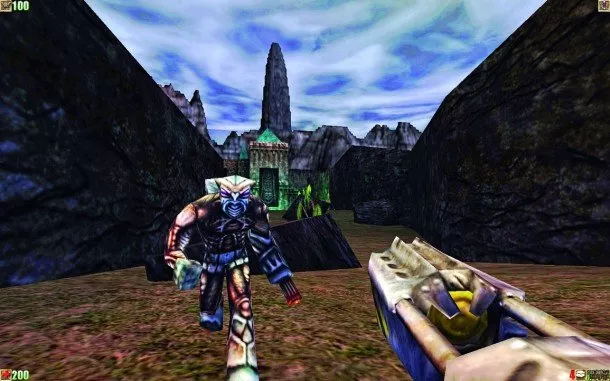
This isn't Rapture. Na Pali is not riddled with sophisticated political parables, nor does it make a postmodern critique of the limits of your freedom within the game, but its vast mountainous terrain does create a powerful sense of drama. Its volcanic enclaves conceal a geographical panoply of tropical oases, temples of pseudo-Mayan and Himalayan derivation, medieval castles, mines and monstrous alien overlords.
Inevitably, that terrain does seem crude now. A polygon went along way back then – perhaps even across an entire mountain range in Unreal's case. What's remarkable is that, though far from the cutting edge of graphical fidelity, the blocky world of Na Pali is still beautiful in composition and colour. Particularly colour in fact – Unreal's happy use of neon lighting gives the game a refreshing saturation that is only now coming back into fashion after years and years of glum brown and gunmetal-grey shooters. It's a natty use of lighting too, that gives Unreal's skies their voluminous quality as they pass overhead, the clouds receding behind pixely mountains tinted with the sallow rays of a lowering sun. Although boxed into canyons, the skies always manage to evoke the sense of a much larger world spanning beyond the sheer planes of rock texture that surround you.
Then there's the way the world sounds: the creak of timber in an ancient stairwell, or the whistle of the wind through a deserted mountain temple. Alien birds caw and wind chimes, well, chime. For all the limitations of its technology, few environments are crafted with such care for the feelings they evoke.
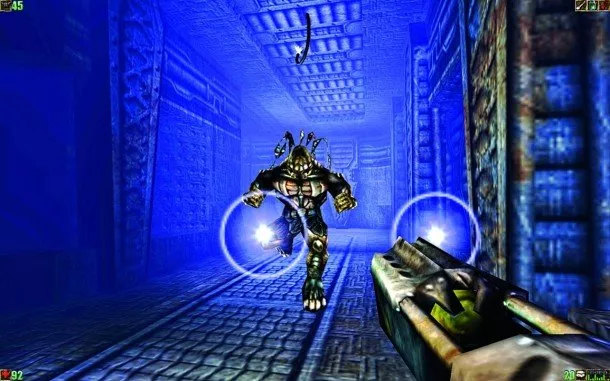
Most striking of all is the scale. Unreal may be short on geometrical complexity, but it's not lacking in grandeur. The trench carved by a fallen starship it is no less staggering in its size now than it was in 1998. The Spire, a stack of rock that rises from the center of a volcano, is similarly massive, and (as with Half-Life 2’s Citadel) your lengthy approach to it across many levels gives you plenty of time to contemplate this. Jump off its highest point, and it takes over ten seconds to hit the lava at its base – making it larger than the Empire State Building.
It hasn't got any smaller over the years, either. Unreal is still a game of size in every respect. Its journey feels genuinely epic. Its battles are an elegant chaos that stands out from the pop-up shooting galleries that swamp the genre, even today.
This was the game that propelled Epic Games' reputation to new heights as creators of bloody, hardcore shooters, and galvanized the 3D industry with its technology. Odd then that what should be considered a landmark of singleplayer entertainment by dint of its historical importance alone has faded in popular gaming memory. Its successes have been overwritten by the popularity of Epic's subsequent Unreal Tournament series, multiplayer games whose fiction is only tangentially related to Unreal's. Nor did it help that Legend Entertainment's attempt a sequel was, frankly, toss. But the killing blow had already been delivered: six months after Unreal's release, Half-Life hit the shelves.
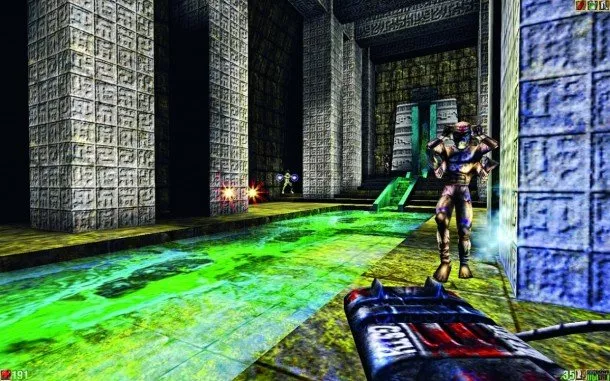
And yes, Half-Life is still the better game, but not, actually, by any considerable factor. When I first played Unreal, I was awestruck. I invited friends round, standing eagerly behind them as they emerged from the Vortex Rikers into the open skies of Na Pali. "See?" I'd say – smug and delighted to have initiated them into the same sense of wonder I had felt. The years have passed and technological progress has inflamed the tyranny of our expectations, but the planet of Na Pali is still a thing to point at proudly and say, "See?"
